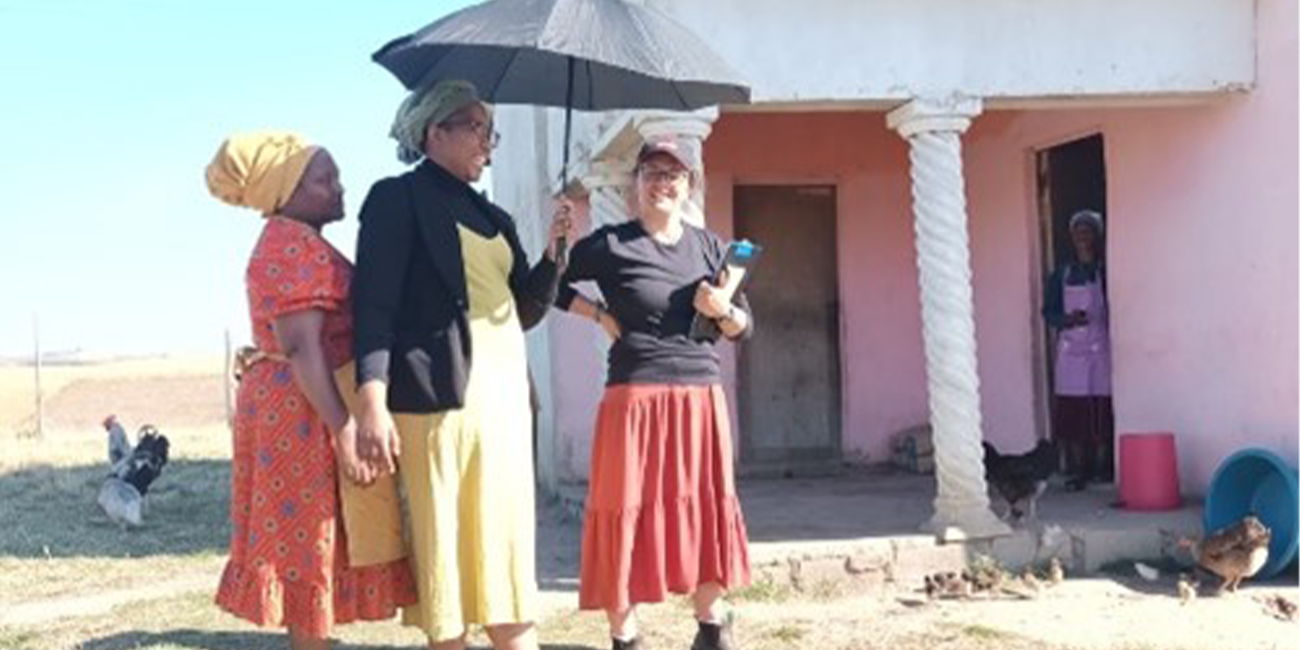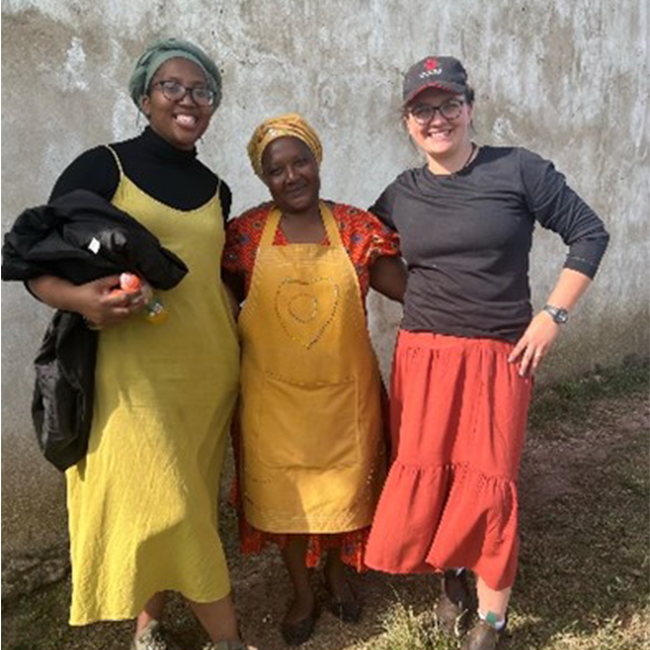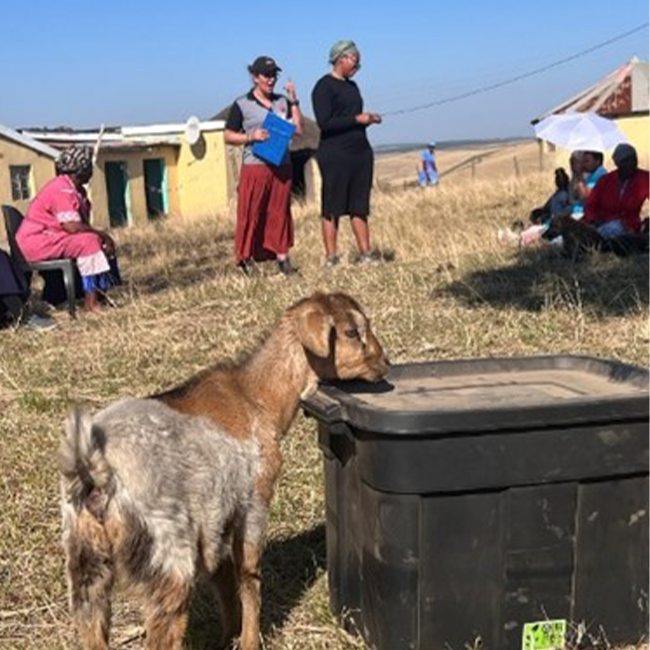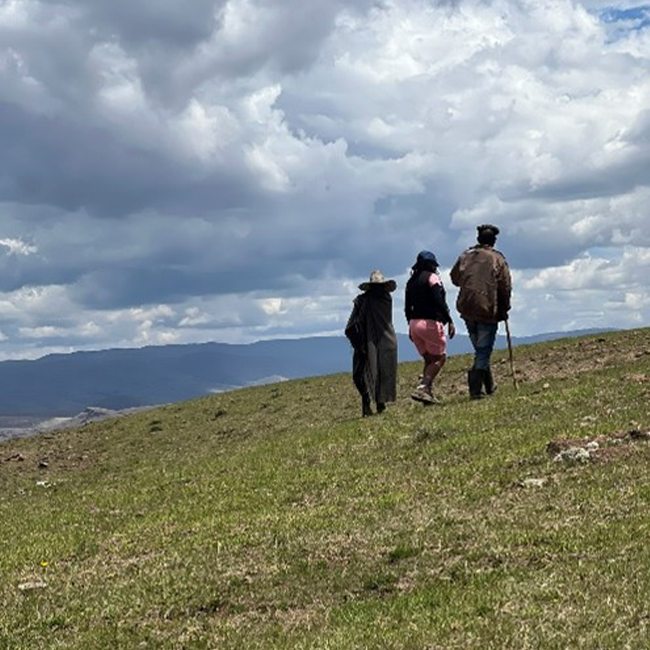EWT Vulture Safe Zone field officer teaches herself Xhosa to better communicate with local communities
By Danielle du Toit

I am of the strong opinion that ‘we only fear that which we do not know’.
Take spiders for example, I’m sure they give most people the heebie-jeebies, but read more about them and you’ll learn that South Africa has over 2,000 species of spiders, but only three of these species can cause major health issues from a bite (that piece of information didn’t help me either, but it did give me a small comfort knowing that the likelihood of a spider trying to kill me in my sleep is next to zero). My point is that if we approach situations in which we allow fear to blind us then we miss out on, at the very least, a learning experience, and at the most, a chance to be more than what we thought we were capable of.
Since joining the Endangered Wildlife Trust’s Birds of Prey Program, I have worked extensively in remote areas, often on my own. In a country where safety is often a concern about a woman working alone in the field, I’m often told to avoid being in areas with no network coverage (what if I get a flat tyre and can’t call someone?), places where I’m the only woman (what if there’s only men and they threaten me?) and where I’m far off the beaten track (how can anyone help me if I’m in the world’s armpit?).
I am quite aware of the threats to my safety, especially at a time when gender-based violence is a concern. But, these concerns are not going to stop me from doing my job. The day I let fear stop me from doing it, is the day I hang up my khakis. So, for those who are scared, I urge you to read further, because these are my experiences; encounters I wouldn’t trade for the world.
Among the extreme remote areas I have visited and experienced include parts of the former Transkei region of the Eastern Cape, the Lesotho highlands and small towns in the Northern Cape.
When I travelled to the Transkei for community outreach and vulture conservation awareness about birds of prey last year, I challenged myself to learn how to speak basic Xhosa so that I could better communicate with the local community.
Luckily, I have a friend that has kept me in line since Grade 6 and she taught me some ground rules about Xhosa. Most importantly is that Xhosa is a language of clicks. The ‘c’ sound is a click pronounced when the tip of the tongue is pressed against one’s teeth. The ‘x’ click is pronounced by pulling one’s tongue down from the back of your palate. The ‘q’ sound is pronounced with the tongue pulling down from middle of the palate and should make an echo sound in your skull, deafen you even, if you’re doing it right. After weeks of practicing and Hlumela sending me voice notes mostly consisting of her laughing at my ‘whiteness’ and coaching me, I was finally able to, with confidence, introduce myself to people: “Molweni. Igama lam nguDanielle. Niyawundi xolela ndyizama uthetha isiXhosa” (Hello, my name is Danielle. I must apologise to everyone; I’m trying to learn to speak Xhosa.)
Hlumela said I should add: “Ayihambi kakuhle”. It’s not going well.
When the Endangered Wildlife Trust’s Birds of Prey team visited a local community and their chief in the former Transkei in July 2023, I was instructed to firstly, wear a skirt to the chief’s place, secondly, to listen intently while the chief or elders speak. Thirdly, I was told to NEVER say no to the bread. This was more of a private notation by one of our colleagues, Nosi, who was actually just telling me that the bread is so delicious you can’t possibly turn it down.
We were in the area to do community outreach and awareness raising about vulture conservation with the CEET (Conservation Exposure Education and Training) and Meat Naturally.
I was on my best behaviour until a fight broke out between the chief’s wife and one of her chickens. The angry woman had proceeded to line that chicken up in her sights and kick it a good ten metres in a perfect arch off her stoep (verandah), her slipper following suite. I don’t know where the Springboks are recruiting their next flyhalf, but I could point them in the direction of her house. The chief, telling us to ‘hleka, hleka’ (laugh, laugh), followed this incident with an opening prayer before mentioning something about the presence of Mlungus (white people). My Xhosa is not advanced enough as yet to understand every word, but as it turned out, the chief was happy about our work in the area. In fact, he wanted us back as soon as possible.


The Northern Cape is a far cry from the highlands of Lesotho, or the rolling green hills of the Transkei. It is vast area known for its red sand and Camel Thorn trees. The roads are straight, cutting through an arid landscape, and the people are not to be trifled with.
My first trip to the Kalahari was with the EWT’s Ronelle ‘make a plan’ Visagie, who has been doing raptor conservation and extension work since long before I was born. We’d been monitoring White-Backed Vulture nests along the Molopo River and had time to pop in to see a local landowner she’d known for years. My first impression of Kallie had a lot more to do with the .38 revolver on his hip than anything else. He welcomed us into his kitchen for a cup of strong coffee. There I was greeted by a black cat with half an ear and scars on his face; a CV of sorts. Funny, I thought, how our animals so reflect their human owners. Kallie had a tough exterior. His face had been brutalised by the sun, giving it the look of weathered leather, but his eyes were laser focused. Although not a tall man, he carried himself in a manner that made him appear larger than life and, if I’m being perfectly honest, a little intimidating.
The reason we had gone to see Kallie was because he had threatened to shoot the vultures as they were a threat to his lambs. Ronelle simply said: “Ag Kallie, moenie die aasvoëls dood maak nie, asseblief” (“Oh Kallie, please don’t kill the vultures.”). With those simple words, that man melted like butter and it occurred to me then that as tough as someone may seem and as difficult as they may try to be, when Ronelle spoke to them in the way that she did, he felt heard and seen, and gave up the fight right there. I guess that’s what we all want.
Culturally speaking, I am a white woman who works in rural South Africa. In my line of work, I have met so many people, ranging from Xhosa Chiefs and Basotho shepherds to Kalahari boers. The people I have met have one thing in common: we all love nature and have a passion for its conservation and protection. South Africa is a rare place where diversity is the norm. We have 12 official languages, including sign language. This excludes the dialects, cultures and subcultures. We have a rich history that can fill libraries with tales from the lush Bushveld to the dry Kalahari, from the Cape of Good Hope to Egoli (Johannesburg). South Africa is not just one thing. Nor are South Africans. If we are so surrounded by differences in our everyday lives, why do we fear them?


